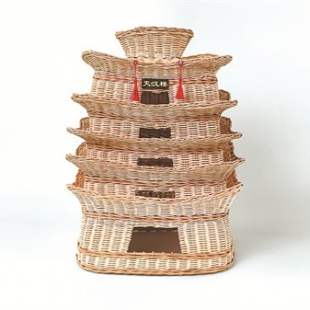Weaving the past into the present

Craft of turning rattan into items of interest is in capable hands as ancient skill enjoys new life, Yang Feiyue reports.
Nestled in the primeval forests of Hanzhong, Shaanxi province, grows a remarkable vine known for its unmatched flexibility, exceptional length, and a smooth, lustrous surface with superb elasticity.
Since ancient times, locals recognized its potential as a premium natural weaving material, prized for the vine's lightness, breathability and remarkable durability.
The Records of the Three Kingdoms (220-280) by Western Jin Dynasty (265-316) historian Chen Shou documented its military applications, describing "vine armor" so effective it could float across rivers, repel water, and withstand arrows and blades.
By the Ming (1368-1644) and Qing (1644-1911) dynasties, the vine craft enjoyed a wave of industrialization, as related products were regularly transported through Hanzhong's waterways and docks.
Rattan weaving matured into a specialized handicraft during the early 20th century, preserving techniques refined through millennia of innovation.
"It is an ancient handicraft that creates functional household items using wooden or bamboo frames as structures and green vines as weaving material, employing traditional weaving techniques," explains Chen Liangshun, who has practiced the craft for more than three decades.
At his company in Huangguan town, Nanzheng district of Hanzhong, villagers have been busy weaving summer products like vine chairs and fans.
"The fans have been particularly popular recently, with online sales easily reaching 1,000 to 2,000 orders daily," says Chen in his 50s.
The man has felt all the more motivated to grow his business since President Xi Jinping's visit to Hanzhong in 2023.
During the inspection tour, Xi said that intangible cultural heritage such as rattan weaving in Hanzhong has long been popular, and work should be done to develop industries with local distinction to secure higher incomes for local people.
Chen says the encouragement from the leadership has given him a greater sense of responsibility and confidence in carrying forward the craft that has run deep in his family.





































